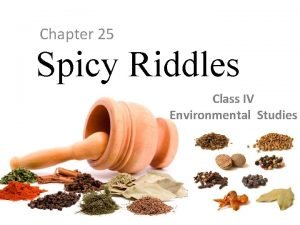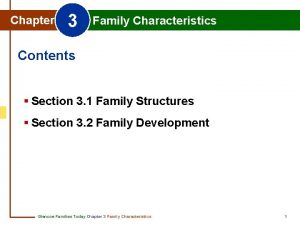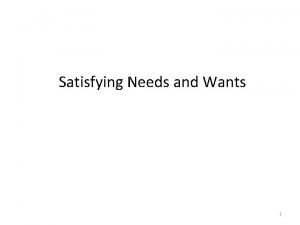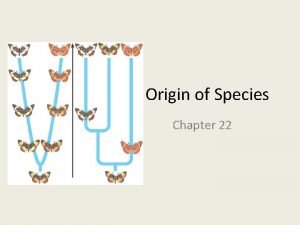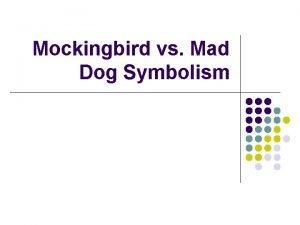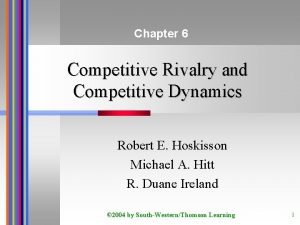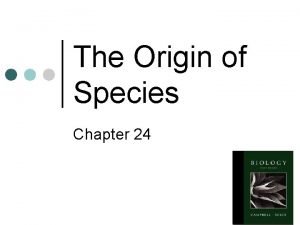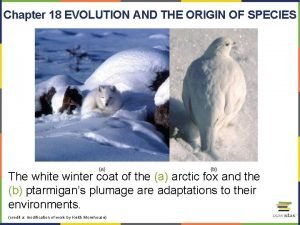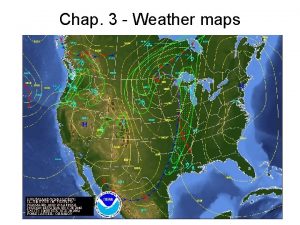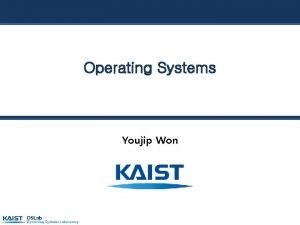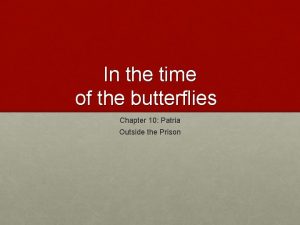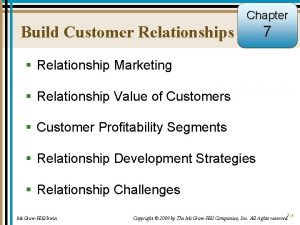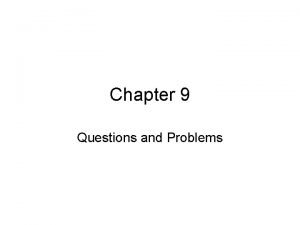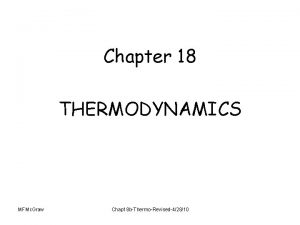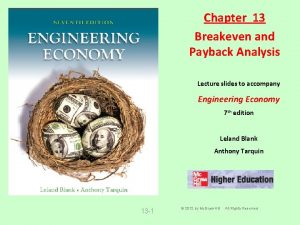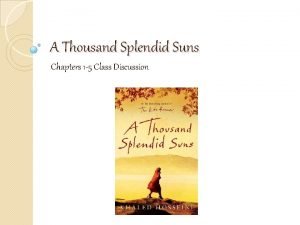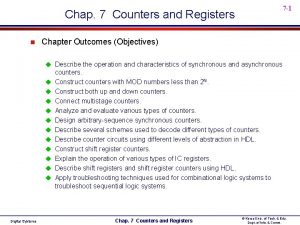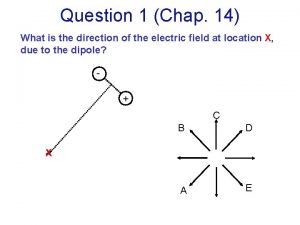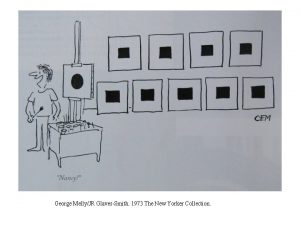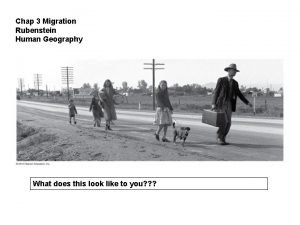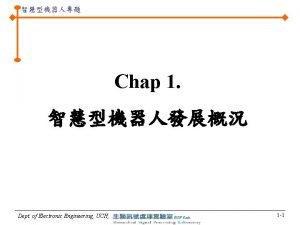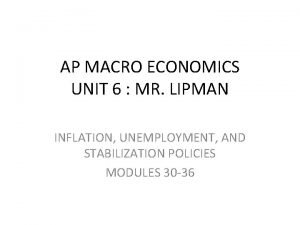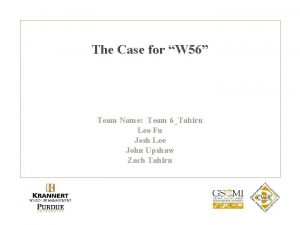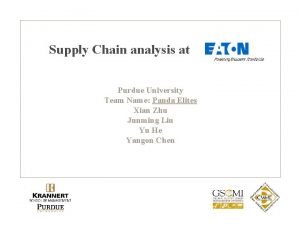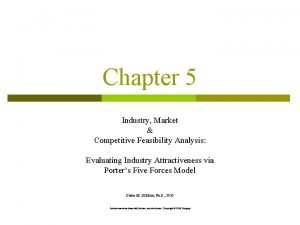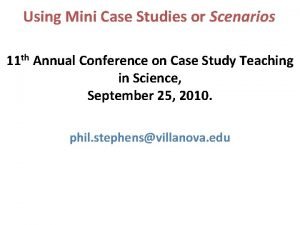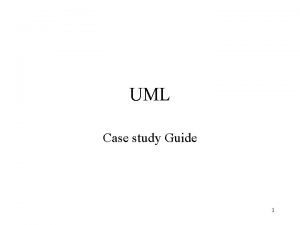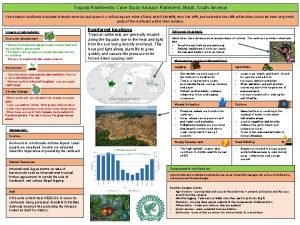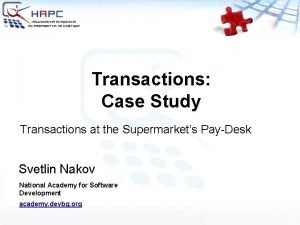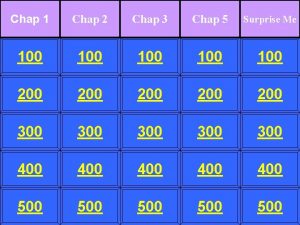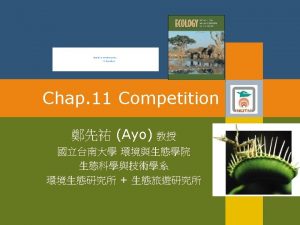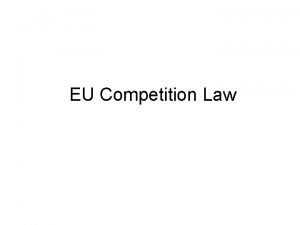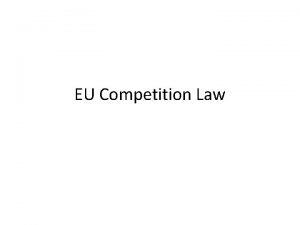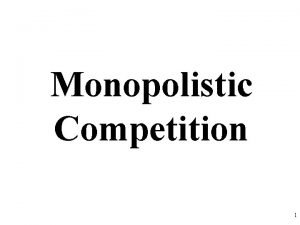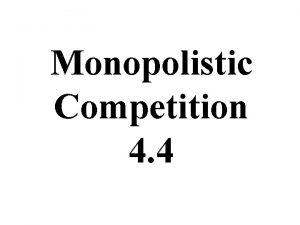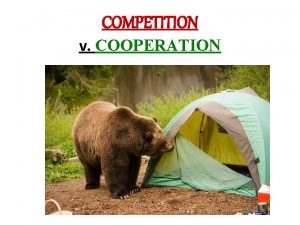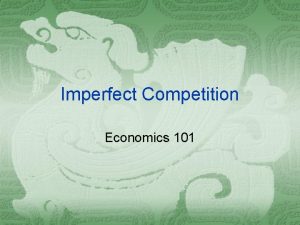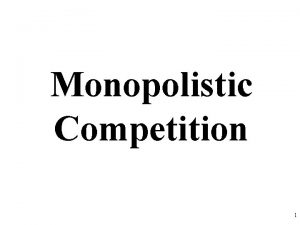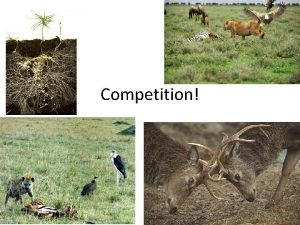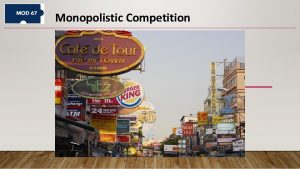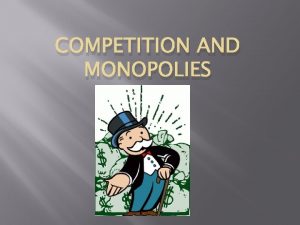Chap 11 Competition v Case Study Competition in





































































































- Slides: 101


Chap. 11 Competition v Case Study: Competition in Plants that Eat Animals 1. Competition for Resources 2. General Features of Competition 3. Competitive Exclusion 4. Altering the Outcome of Competition v Case Study Revisited v Connections in Nature: The Paradox of Diversity 2

Case Study: Competition in Plants that Eat Animals v Charles Darwin was the first to provide clear evidence of carnivory in plants. v Plants use a variety of mechanisms to eat animals. v The Venus flytrap has modified leaves that attract insects with nectar. The inner surface has touch-sensitive hairs; if an insect trips those hairs, the leaf snaps shut in half a second. 3

Figure 11. 1 A Plant that Eats Animals 4

Case Study: Competition in Plants that Eat Animals v Pitcher plants lure insects into a pitchershaped trap. v The inside of the pitcher has downwardfacing hairs, which make it easy for the insect to crawl in, but hard to crawl out. v About halfway down, many pitchers have a layer of wax that sticks to the insect’s feet, causing it to tumble into a vat that contains water or digestive juices. 5

Case Study: Competition in Plants that Eat Animals v Why do some plants eat animals? § Competition among plants can be intense where soil nutrients are scarce. § In nutrient-poor environments, carnivory in plants has evolved multiple times. § Carnivory may be an adaptation to lownutrient environments, to avoid competing with other plants. 6

Case Study: Competition in Plants that Eat Animals v In experiments with pitcher plants Sarracenia alata, Brewer (2003) removed noncarnivorous competitor plants. Some pitcher plants were also deprived of prey (starved). v Growth rates increased when competitors were removed. v But with neighbors intact, and pitchers covered, the growth rate was not reduced as expected. 7

Figure 11. 2 Competition Decreases Growth in a Carnivorous Plant 8

Introduction v A. G. Tansley did one of the first experiments on competition in 1917. v He wanted to explain the distribution of two species of bedstraw: Galium hercynicum, which was restricted to acidic soils, and G. pumilum, restricted to calcareous soils. 9

Introduction v Tansley found that if grown alone, each species could survive on both acidic and calcareous soils. v But when grown together, soil type determined which would survive. v Tansley inferred that competition restricted the two species to particular soil types in nature. 10

Introduction v Interspecific competition is an interaction between two species in which each is harmed when they both use the same limiting resource. v Intraspecific competition can occur between individuals of a single species. 11

Competition for Resources Concept 11. 1: Competition occurs between species that share the use of a resource that limits the growth, survival, or reproduction of each species. v Organisms compete for resources— features of the environment that are required for growth, survival, or reproduction, and which can be consumed to the point of depletion. 12

Competition for Resources Examples of resources that can be consumed to depletion: v Food. v Water in terrestrial habitats. v Light for plants. v Space, especially for sessile organisms. v For mobile animals, space for refuge, nesting, etc. 13

Figure 11. 3 Space Can Be a Limiting Resource 14

Competition for Resources v Species are also influenced by factors that are not consumed, such as temperature, p. H, salinity. v These factors are not considered to be resources. v Physical factors affect population growth rates but are not consumed or depleted. 15

Competition for Resources v Experiments using two species of diatoms (single-celled algae that make cell walls of silica, Si. O 2) were done by Tilman et al. (1981). v When each species was grown alone, a stable population size was reached and silica concentrations were reduced. v When grown together, the two species competed for silica, and one species drove the other to extinction. 16

Figure 11. 4 Competing Organisms Can Deplete Resources (Part 1) 17

Figure 11. 4 Competing Organisms Can Deplete Resources (Part 2) 18

Competition for Resources v Competition should increase in intensity when resources are scarce. v Competition in plants might be expected to increase in importance when they are growing in nutrientpoor soils. v Using a perennial grass species, Wilson and Tilman (1993) were able to demonstrate this. 19

Competition for Resources v The grass species was transplanted into plots that had been growing with and without nitrogen fertilizer added. v Each plot type had 3 treatments: 1. Neighbors left intact. 2. Neighbor roots left intact but neighbor shoots tied back. 3. Neighbor roots and shoots both removed. 20

Competition for Resources v Treatment 1 would include both aboveground and belowground competition, which did not differ between the two plot types. v Belowground competition (treatment 2) was most intense in the nitrogenlimited plots. 21

Figure 11. 5 A Resource Availability Affects the Intensity of Competition 22

Competition for Resources v Aboveground competition was estimated by subtracting competition in treatment 2 from competition in treatment 1. v Aboveground competition for light increased when light levels were low. 23

Figure 11. 5 B Resource Availability Affects the Intensity of Competition 24

Competition for Resources v How important is competition in ecological communities? v Results from many studies have been compiled analyzed to answer this question. v Schoener (1983) found that of 390 species studied, 76% showed effects of competition under some conditions; 57% showed effects under all conditions tested. 25

Competition for Resources v Connell (1983) found that competition was important for 50% of 215 species in 72 studies. v Gurevitch et al. (1992) analyzed the magnitude of competitive effects found for 93 species in 46 studies. They showed that competition had significant effects on a wide range of organisms. 26

Competition for Resources v Potential biases in these analyses include failure of researchers to publish studies that show no significant effects, and a tendency for investigators to study species they suspect will show competition. v Still, they document that competition is common, though not ubiquitous. 27

General Features of Competition Concept 11. 2: Competition, whether direct or indirect, can limit the distributions and abundances of competing species. v As far back as Darwin, competition between species has been seen as an influence on evolution and species distributions. 28

General Features of Competition v Exploitation competition: Species compete indirectly through their mutual effects on the availability of a shared resource. v Competition occurs simply because individuals reduce the availability of a resource as they use it. v Examples: The pitcher plants and the diatoms 29

General Features of Competition v Interference competition: Species compete directly for access to a resource. v Individuals may perform antagonistic actions (e. g. , when two predators fight over a prey item, or voles aggressively exclude other voles from preferred habitat). 30

General Features of Competition v Interference competition can also occur in sessile species. v Example: The acorn barnacle often crushes or smothers nearby individuals of another barnacle species as it grows. As a result, it directly prevents the other species from living in most portions of a rocky intertidal zone. 31

General Features of Competition v Allelopathy: A form of interference competition in which individuals of one species release toxins that harm other species. v Spotted knapweed, an invasive plant in North America, has been very successful and caused great economic damage to rangeland. 32

General Features of Competition v Cattle do not eat spotted knapweed, giving it an edge over native plants that cattle do eat. v It also releases a toxin called catechin into surrounding soils, which has been shown to reduce germination and growth of native grasses. 33

Figure 11. 6 Chemical Warfare in Plants (Part 1) 34

Figure 11. 6 Chemical Warfare in Plants (Part 2) 35

General Features of Competition v For a resource in short supply, competition will reduce the amount available to each species. v In many cases the effects of competition are unequal, or asymmetrical, and one species is harmed more than the other. v Example: When one species drives another to extinction. 36

General Features of Competition v Competition can also occur between distantly related species. v In experiments with rodents and ants that eat the same seeds, Brown and Davidson (1977) set up plots with four treatments: 37

General Features of Competition 1. Wire mesh fence excluded seed-eating rodents. 2. Seed-eating ants were excluded by applying insecticides. 3. Both rodents and ants were excluded. 4. Undisturbed control plots. 38

General Features of Competition v Where rodents were excluded, ant colonies increased by 71%. v Where ants were excluded, rodents increased in both number and biomass. v Where both were excluded, the number of seeds increased by 450%. 39

Figure 11. 7 Ants and Rodents Compete for Seeds 40

General Features of Competition v When either rodents or ants were removed, the group that remained ate roughly as many seeds as rodents and ants combined ate in the control plots. v In natural conditions, each group would be expected to eat fewer seeds in the presence of the other group than it could eat when alone. 41

General Features of Competition v Competition can also limit distribution and abundance of species. v Connell (1961) examined factors that influenced the distribution, survival, and reproduction of two barnacle species, Chthamalus stellatus and Semibalanus balanoides, on the coast of Scotland. 42

General Features of Competition v Distribution of larvae of the two species overlapped throughout the upper and middle intertidal zones. v Adult distributions did not overlap: Chthamalus were found only near the top of the intertidal zone; adult Semibalanus were found throughout the rest of the intertidal zone. 43

Figure 11. 8 Squeezed Out by Competition 44

General Features of Competition v Using removal experiments, Connell found that competition with Semibalanus excluded Chthamalus from all but the top of the intertidal zone. v Semibalanus smothered, removed, or crushed the other species. v However, Semibalanus dried out and survived poorly at the top of the intertidal zone. 45

General Features of Competition v Competition can also affect geographic distribution. v A natural experiment refers to a situation in nature that is similar in effect to a controlled removal experiment. 46

General Features of Competition v Chipmunk species in the southwestern U. S. live in mountain forests. v Patterson (1980, 1981) found that when a chipmunk species lived alone on a mountain range, it occupied a broader range of habitats and elevations than when it lived with a competitor species. 47

Figure 11. 9 A “Natural Experiment” on Competition between Chipmunks 48

Competitive Exclusion Concept 11. 3: Competing species are more likely to coexist when they use resources in different ways. v If the overall ecological requirements of a species—its ecological niche—are very similar to those of a superior competitor, that competitor may drive it to extinction. 49

Competitive Exclusion v In the 1930 s, G. F. Gause performed laboratory experiments on competition using three species of Paramecium. v Populations of all three Paramecium species reached a stable carrying capacity when grown alone. v When paired, some species drove others to extinction. 50

Figure 11. 10 Competition in Paramecium (Part 1) 51

Figure 11. 10 Competition in Paramecium (Part 2) 52

Competitive Exclusion v P. aurelia drove P. caudatum to extinction. They may have been unable to coexist because both fed on bacteria floating in the medium. v P. caudatum and P. bursaria were able to coexist, although they were clearly in competition—the carrying capacity of both species was lowered. 53

Competitive Exclusion v P. caudatum usually ate bacteria floating in the medium, while P. bursaria usually fed on yeast cells that settled to the bottom. v Unless two species use available resources in different ways, one can go extinct. 54

Competitive Exclusion v The competitive exclusion principle: Two species that use a limiting resource in the same way can not coexist. v Field observations are consistent with this explanation of why competitive exclusion occurs in some cases, but not others. 55

Competitive Exclusion v Resource partitioning: Species use a limited resource in different ways. v Example: Four species of Anolis lizards on Jamaica live together in trees and shrubs and eat similar food. v Schoener (1974) found that the lizards used the space in different ways, resulting in a reduction in competition. 56

57 Figure 11. 11 Resource Partitioning in Lizards

Competitive Exclusion v Competition was first modeled by A. J. Lotka (1932) and Vito Volterra (1926). v Their equation is now known as the Lotka–Volterra competition model. 58

Competitive Exclusion N 1 = population density of species 1 r 1 = intrinsic rate of increase of species 1 K 1 = carrying capacity of species 1 α and β = competition coefficients— constants that describe effect of one species on the other. 59

Box 11. 1 What Do the Competition Coefficients α and β Represent? α is the effect of species 2 on species 1; β is the effect of species 1 on species 2. α measures the extent to which the use of resources by an individual of species 2 decreases the per capita growth rate of species 1. When α = 1, individuals of the two species are identical in their effects. 60

Box 11. 1 What Do the Competition Coefficients α and β Represent? v When α < 1, an individual of species 2 decreases growth of species 1 by a smaller amount than does an individual of species 1. v When α > 1, an individual of species 2 decreases growth of species 1 by a larger amount than does an individual of species 1. 61

Competitive Exclusion v The Lotka–Volterra model supports the idea that competitive exclusion is likely when competing species require very similar resources. v The model can be used to predict changes in the densities of species 1 and 2 over time. Then those changes can be related to the way in which each species uses resources. 62

Box 11. 2 When Do Completing Populations Stop Changing in Size? v Population density of species 1 does not change over time when d. N 1/dt = 0. v This can occur when v rearranging: 63

Box 11. 2 When Do Completing Populations Stop Changing in Size? v Using a similar approach for species 2, we find that d. N 2/dt = 0 when v These two equations describe straight lines written with N 2 as a function of N 1. 64

Figure 11. 12 Graphical Analyses of Competition 65

Competitive Exclusion v The straight lines are zero population growth isoclines: The population does not increase or decrease in size for any combination of N 1 and N 2 that lies on these lines. v Zero growth isoclines can determine the conditions under which each species will increase or decrease. 66

Competitive Exclusion v This graphical approach can be used to predict the end result of competition between species. v The N 1 and N 2 isoclines are plotted together. There are four possible ways that the N 1 and N 2 isoclines can be arranged relative to each other. 67

Figure 11. 13 A, B Outcome of Competition in the Lotka–Volterra Competition Model 68

Competitive Exclusion v When the isoclines do not cross, competitive exclusion results. v Depending on which isocline is above the other, either species 1 or species 2 always drives the other to extinction. 69

Figure 11. 13 C, D Outcome of Competition in the Lotka–Volterra Competition Model 70

Competitive Exclusion v In only one case, the two species coexist. v Although in this case, competition still has an effect: The final or equilibrium density of each species is lower than its carrying capacity. 71

Competitive Exclusion v Coexistence occurs when the values of α, β, K 1, and K 2 are such that the following inequality holds: v If α and β are equal, and close to 1, the species are equally strong competitors, and have similar effects on each other. 72

Competitive Exclusion v Example: If α = β = 0. 95 v Coexistence is predicted only within a narrow range of values for the carrying capacities, K 1 and K 2. 73

Competitive Exclusion v Example: If α = β = 0. 1 v Coexistence is predicted within a much broader range of carrying capacities. 74

Altering the Outcome of Competition Concept 11. 4: The outcome of competition can be altered by environmental conditions, species interactions, disturbance, and evolution. v Environmental conditions can results in a competitive reversal—the species that was the inferior competitor in one habitat becomes the superior competitor in another. 75

Altering the Outcome of Competition v Example: Presence of herbivores can lead to competitive reversals. v When ragwort flea beetles were introduced to western Oregon, the biomass of ragwort, an invasive species, decreased, and its competitor species increased. v In the absence of the flea beetles, ragwort is a superior competitor. 76

77 Figure 11. 14 Herbivores Can Alter the Outcome of Competition

Altering the Outcome of Competition v Disturbances such as fires or storms can kill or damage individuals, while creating opportunities for others. v Example: Some forest plant species require abundant sunlight and are found only where disturbance has opened the tree canopy. v As trees recolonize and create shade, these plants can not persist in the patch. 78

Altering the Outcome of Competition v Such species are called fugitive species because they must disperse from one place to another as conditions change. v The brown alga called sea palm coexists with mussels, a competitively dominant species, in the rocky intertidal zone because large waves sometimes remove the mussels, creating temporary openings. v On shorelines with low disturbance rates, competition runs its course, and mussels drive sea palms to extinction. 79

80 Figure 11. 15 Population Decline in an Inferior Competitor

Altering the Outcome of Competition v Competition has the potential to cause evolutionary change, and evolution has the potential to alter the outcome of competition. v This interplay has been observed in many studies. 81

Altering the Outcome of Competition v In experimental studies of competing fly species, house flies and green blowflies were grown together in chambers and given the same food. v Initially, houseflies appeared to be the superior competitors, rapidly increasing in density. v Over time, the situation reversed, and eventually the houseflies went extinct. 82

Figure 11. 16 A Competitive Reversal (Part 1) 83

Figure 11. 16 A Competitive Reversal (Part 2) 84

Altering the Outcome of Competition v Individuals were also tested for signs of evolutionary change. v Blowflies raised in competition with houseflies had evolved to become superior competitors and always outcompeted the houseflies. v The underlying mechanisms of this and the associated genetic changes are not known. 85

Altering the Outcome of Competition v Natural selection can influence the morphology of competing species and result in character displacement. v Natural selection results in the forms of competing species becoming more different over time. 86

Figure 11. 17 Character Displacement 87

Altering the Outcome of Competition v In two species of finches on the Galápagos archipelago, the beak sizes, and hence sizes of the seeds the birds eat, are different on islands with both species. v On islands with only one of the species, beak sizes are similar. 88

89 Figure 11. 18 Competition Shapes Beak Size (Part 1)

90 Figure 11. 18 Competition Shapes Beak Size (Part 2)

Altering the Outcome of Competition v Experimental studies have also demonstrated character displacement. v The morphology of sticklebacks (fish) varies the most when different species live in the same lake. v Individuals whose morphology differed considerably from their competitors grew more rapidly than did those with morphology similar to that of their competitors. 91

Figure 11. 19 An Experimental Test of Character Displacement 92

Case Study Revisited: Competition in Plants that Eat Animals v In the experimental studies on pitcher plants (S. alata), the results suggested little competition between the pitcher plant and its noncarnivorous neighbors for soil nutrients. v But competition for light was more important. When shaded by neighbors, pitcher height increased at the expense of pitcher volume. 93

Case Study Revisited: Competition in Plants that Eat Animals v When neighbors were removed, S. alata growth rate increased, but only when they were able to capture animal prey. v When neighbors were left intact, light availability had no effect on S. alata growth rates when prey were excluded. v When prey was available, growth rate increased as light increased. 94

Figure 11. 20 Interaction between Light and Prey Availability 95

Case Study Revisited: Competition in Plants that Eat Animals v S. alata competes with its neighbors for light but avoids competition for soil nutrients by eating animal prey. v When light levels are low, S. alata grows little and requires few nutrients, thus prey deprivation has little effect. v In high light levels, S. alata grows more and requires nutrients, thus prey deprivation matters. 96

Connections in Nature: The Paradox of Diversity v In spite of competition, natural communities contain many species sharing scarce resources. v Resource partitioning is one explanation for this. v Other mechanisms include environmental variation and disturbance. Species may coexist if different species are superior competitors under different environmental conditions. 97

Connections in Nature: The Paradox of Diversity v In the pitcher plant studies, Brewer wanted to know whether resource partitioning in the form of different methods of nutrient acquisition could explain the coexistence of carnivorous and noncarnivorous plants. 98

Connections in Nature: The Paradox of Diversity v When pitcher plants were deprived of prey, they should have experienced more severe competitive effects, or compensated for reduced nutrients by increasing production of roots or pitchers. v Neither of these outcomes occurred. 99

Connections in Nature: The Paradox of Diversity v S. alata is tolerant of fire and uses changes in light levels as a cue for growth. v It grows primarily when its competitors are absent or reduced (e. g. , after a fire). v This growth strategy may allow S. alata to persist with noncarnivorous plants that can outcompete it for both light and scarce soil nutrients. 100

問題與討論 Ayo NUTN website: http: //myweb. nutn. edu. tw/~hycheng/
 Chap chap slide
Chap chap slide Best case worst case average case
Best case worst case average case Fbi virtual case file case study
Fbi virtual case file case study Monopoly vs perfect competition
Monopoly vs perfect competition Perfect competition vs monopolistic competition
Perfect competition vs monopolistic competition Market structures venn diagram
Market structures venn diagram Perfect competition vs monopolistic competition
Perfect competition vs monopolistic competition Windbreaker chapter 1
Windbreaker chapter 1 Passion chap 6
Passion chap 6 Bank run chap 11
Bank run chap 11 Autocorrelation in econometrics
Autocorrelation in econometrics Spicy riddles worksheet with answers
Spicy riddles worksheet with answers Kstn chap 18
Kstn chap 18 Family control ch3
Family control ch3 The origin of species chapter 24 bl
The origin of species chapter 24 bl Satisfying needs 2
Satisfying needs 2 The origin of species chapter 22 bl
The origin of species chapter 22 bl Mad dog tkam
Mad dog tkam Mathew chapter 5
Mathew chapter 5 Chapter 1 learning about children
Chapter 1 learning about children Rivalry 1 chap 6
Rivalry 1 chap 6 System engineer chap 1
System engineer chap 1 Chap tree
Chap tree Kstn chap 7
Kstn chap 7 I was in that state when a chap easily turns nasty analysis
I was in that state when a chap easily turns nasty analysis The origin of species manga 24
The origin of species manga 24 Passion chapter 9
Passion chapter 9 đường bao của mặt cắt chập được vẽ bằng
đường bao của mặt cắt chập được vẽ bằng In the summer chap 22
In the summer chap 22 What are the project selection methods
What are the project selection methods Origin of species manga 18
Origin of species manga 18 Define the relationship chap 12
Define the relationship chap 12 Fitness - chapter 1
Fitness - chapter 1 Chap tree
Chap tree Weather station model examples
Weather station model examples Chap 23
Chap 23 Payback chap 12
Payback chap 12 Fitness chapter 1
Fitness chapter 1 Youjup
Youjup The butterfly inside chap 10
The butterfly inside chap 10 Core service provision
Core service provision Payback ch 9
Payback ch 9 Swapping chapter 6
Swapping chapter 6 Love and communication in intimate relationships
Love and communication in intimate relationships Breath at the same air chapter 1
Breath at the same air chapter 1 What is the fundamental challenge of dashboard design
What is the fundamental challenge of dashboard design Chap 24
Chap 24 Into the light chapter 22
Into the light chapter 22 To not die chap 18
To not die chap 18 Payback analysis
Payback analysis Payback manga 13
Payback manga 13 Define the relationship chapter 11
Define the relationship chapter 11 Fitness chap 1
Fitness chap 1 Pleasure principle chap 1
Pleasure principle chap 1 What does jinn mean in a thousand splendid suns
What does jinn mean in a thousand splendid suns Chap counter
Chap counter Kip chap
Kip chap Chap de direction
Chap de direction C chap
C chap Chap 22
Chap 22 Rottgen pieta
Rottgen pieta Chap a to z
Chap a to z Fitness chapter 3
Fitness chapter 3 Khan academy electrochemistry
Khan academy electrochemistry Cell chap 14
Cell chap 14 Lindhard theory
Lindhard theory What is migration
What is migration Deng chap
Deng chap Chap tools
Chap tools Chap. 1
Chap. 1 Chap lipman
Chap lipman Which do you prefer chap 4
Which do you prefer chap 4 Case competition team name
Case competition team name Target scholarship
Target scholarship Purdue case competition
Purdue case competition Montreaux chocolate
Montreaux chocolate Goldman sachs case competition
Goldman sachs case competition Competition analysis in feasibility study example
Competition analysis in feasibility study example Competition feasibility study
Competition feasibility study Difference between short case and long case
Difference between short case and long case Linear search average case
Linear search average case Glennan building cwru
Glennan building cwru Bubble sort algorithm pseudocode
Bubble sort algorithm pseudocode Bubble sort best case and worst case
Bubble sort best case and worst case Bubble sort best case and worst case
Bubble sort best case and worst case Ambiguous case trigonometry
Ambiguous case trigonometry Mis zara
Mis zara Yelp case study presentation
Yelp case study presentation Kf memory case study
Kf memory case study Whole foods case study
Whole foods case study Action research vs case study
Action research vs case study Volkswagen case study ppt
Volkswagen case study ppt Plant machinery valuation
Plant machinery valuation Phil stephens villanova
Phil stephens villanova Starbucks foreign direct investment case study
Starbucks foreign direct investment case study Case study 11
Case study 11 Uml case study
Uml case study Illustrative case study example
Illustrative case study example Tuna for lunch case study answer key
Tuna for lunch case study answer key Tuna for lunch case study answers
Tuna for lunch case study answers Case study amazon rainforest
Case study amazon rainforest Supermarket seo case study
Supermarket seo case study











